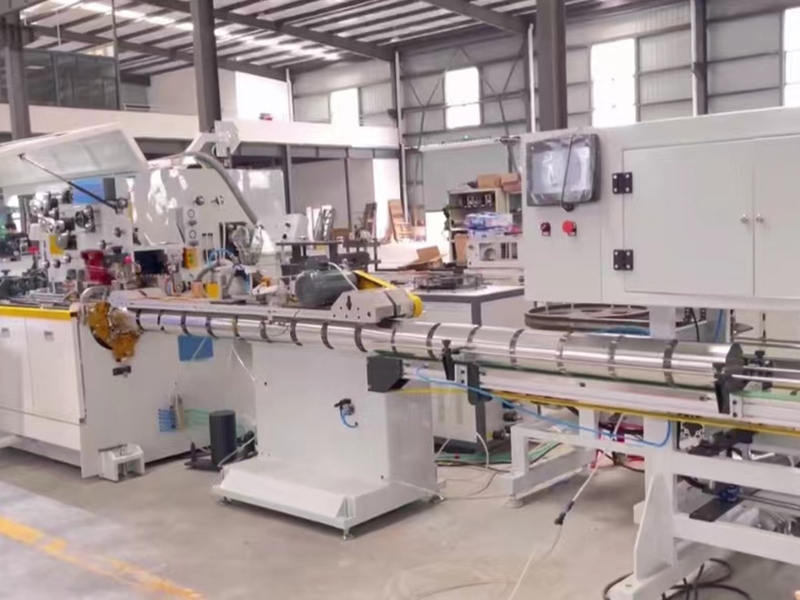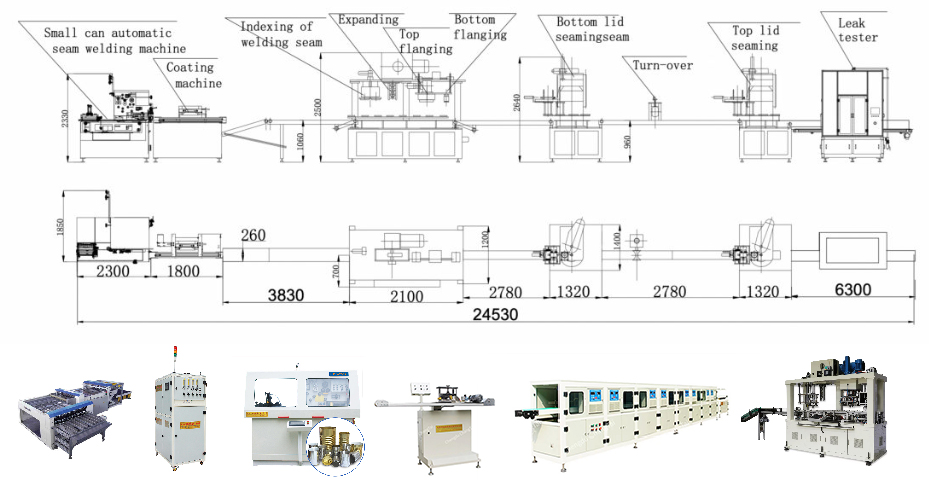The technical requirements for a dryer system specifically designed for canbody making equipment involve several key factors to ensure efficient drying that maintains quality while meeting production speeds. Here’s how these systems are typically configured and how the size of the can influences drying:
Technical Requirements:
-
Drying Method:
-
Direct vs. Indirect Drying: For can drying, direct dryers are often used where hot air directly contacts the cans to evaporate moisture. These systems can utilize natural gas to heat the drying air for efficiency.
-
Air Knives: High-velocity air knives are used to remove moisture from cans at high speeds, ensuring minimal moisture remains on the can surface post-drying. This is crucial for preventing stress corrosion, particularly in beverage can production.
-
-
Moisture Control:
-
The system should be capable of reducing moisture to less than 3mg on the can end to meet industry standards for preventing transgranular stress corrosion, especially in environments with high humidity and temperature.
-
-
Energy Efficiency:
-
Energy consumption is a major factor; systems with up to 90% energy savings compared to traditional compressed air systems are preferred. This not only reduces operational costs but also aligns with sustainability goals.
-
-
Noise Levels:
-
Dryers should be designed to minimize noise, with some systems reducing operational noise to below 85 dBA through enclosed designs.
-
-
Material Compatibility:
-
The dryer must be constructed from materials like food-grade stainless steel to ensure compatibility with the can materials and to maintain hygiene standards in food and beverage applications.
-
-
Customization and Scalability:
-
Systems should be customizable for different can sizes, production rates, and specific areas of the can that need drying, ensuring flexibility in manufacturing lines.
-
Impact of Can Size on Drying Speed:
-
Surface Area and Volume:
-
Larger cans inherently have more surface area and potentially more volume of water to evaporate. This means that:
-
Drying Time: Larger cans require more time in the dryer to achieve the same level of dryness due to increased moisture content or surface area for evaporation.
-
Air Flow and Heat Distribution: Systems must be designed to handle different can sizes efficiently, often using multi-lane tunnels or adjusting airflow to ensure uniform drying across various can dimensions.
-
-
-
Production Speed:
-
The size of the can directly affects the throughput of the drying system. Smaller cans can be dried faster, allowing for higher production rates. Conversely, larger cans might slow down the line unless the dryer is optimized for their size, possibly requiring additional drying stages or more powerful air flow.
-
-
System Design:
-
Dryers might need adjustable configurations such as Y-shaped slot designs for removing moisture from specific areas like the ring-pull of larger cans, which might not be as critical for smaller cans.
-
The technical setup for drying in canbody making must consider can size alongside other factors like material type, production rate, and environmental conditions to optimize both speed and quality. Customization in dryer design plays a pivotal role in accommodating various can sizes while maintaining efficiency and quality standards.
The induction curing system or drying machine for can-body welding is a vital component in the production machine line for food, beverage, and milk powder can manufacturing. Its efficient drying capabilities, precise temperature control, compact design, energy efficiency, and safety features contribute to the overall productivity and quality of the can production process.
Contact us: https://www.ctcanmachine.com/
CEO@ctcanmachine.com:+86 138 0801 1206
Post time: Feb-04-2025




